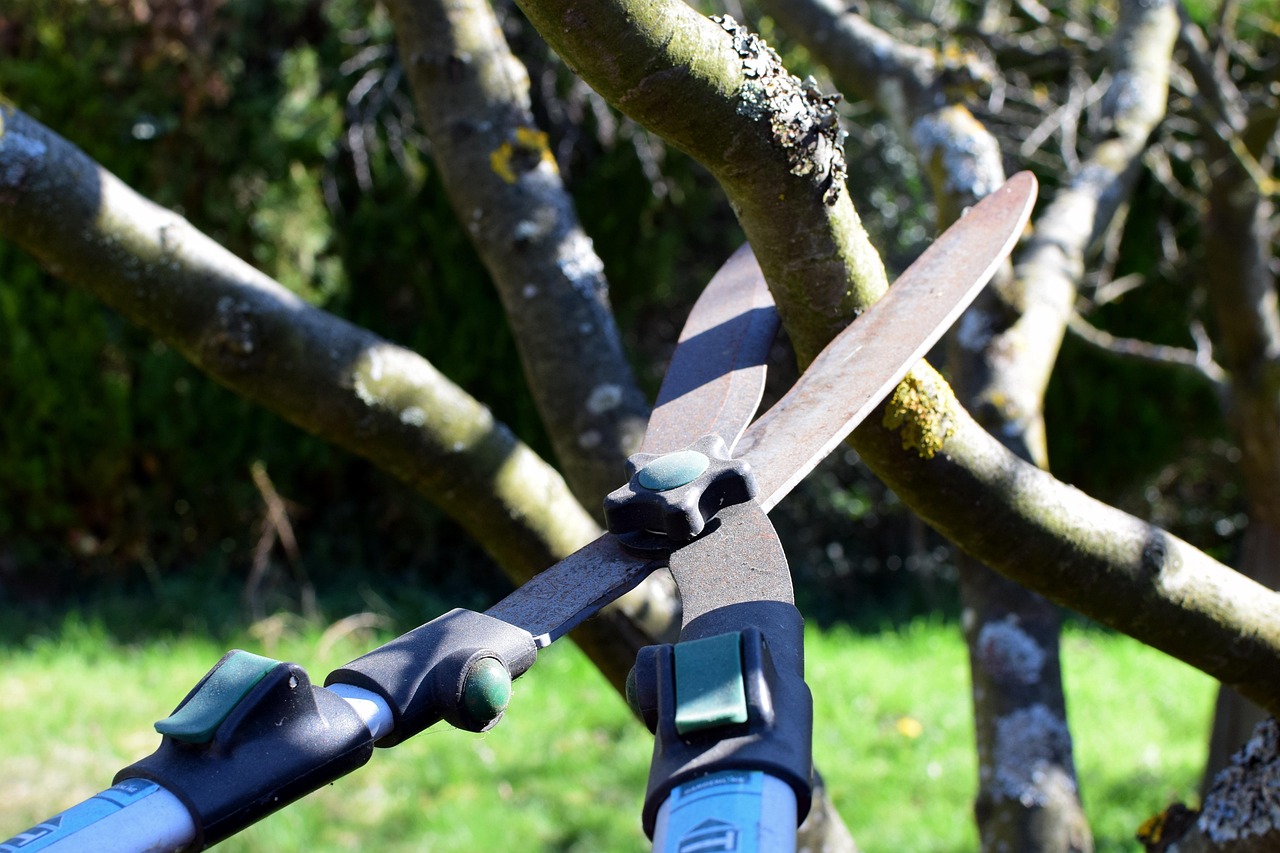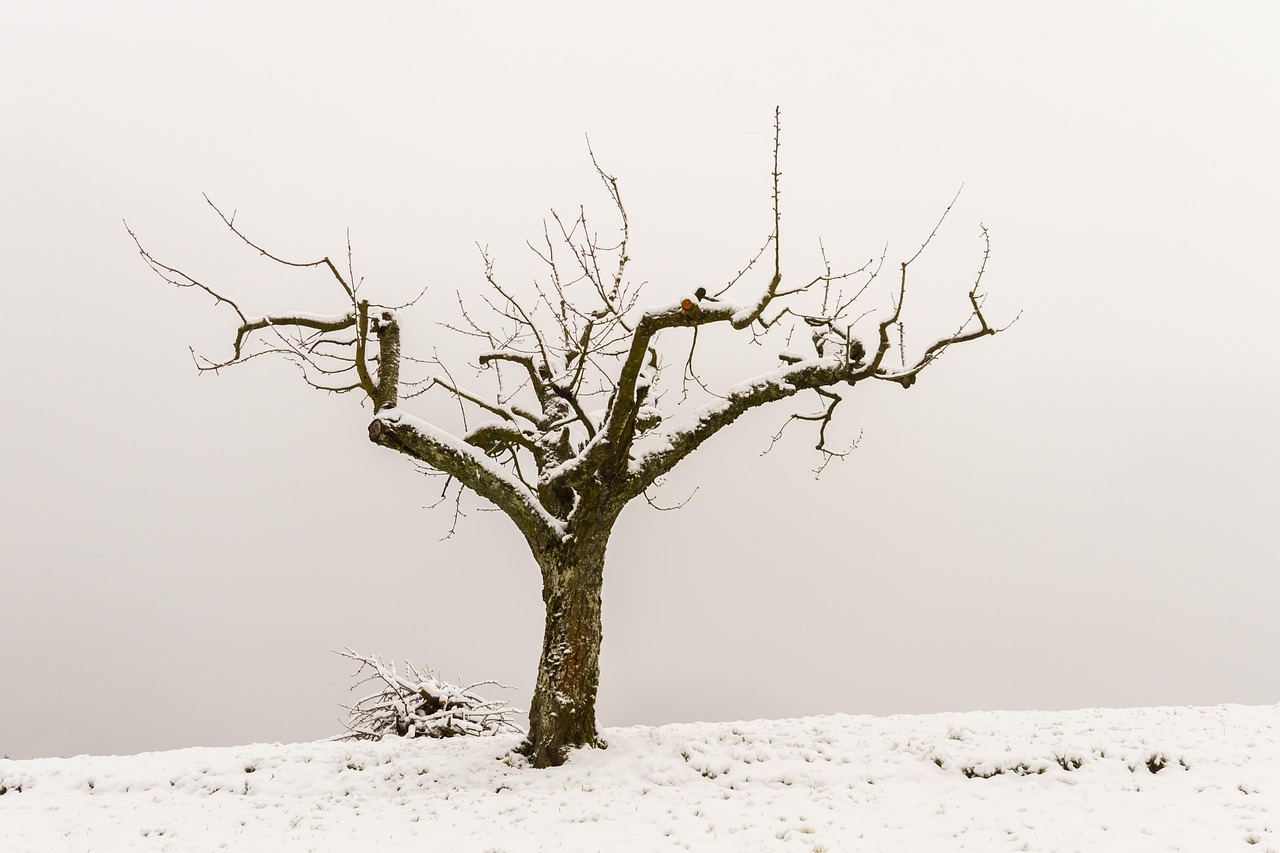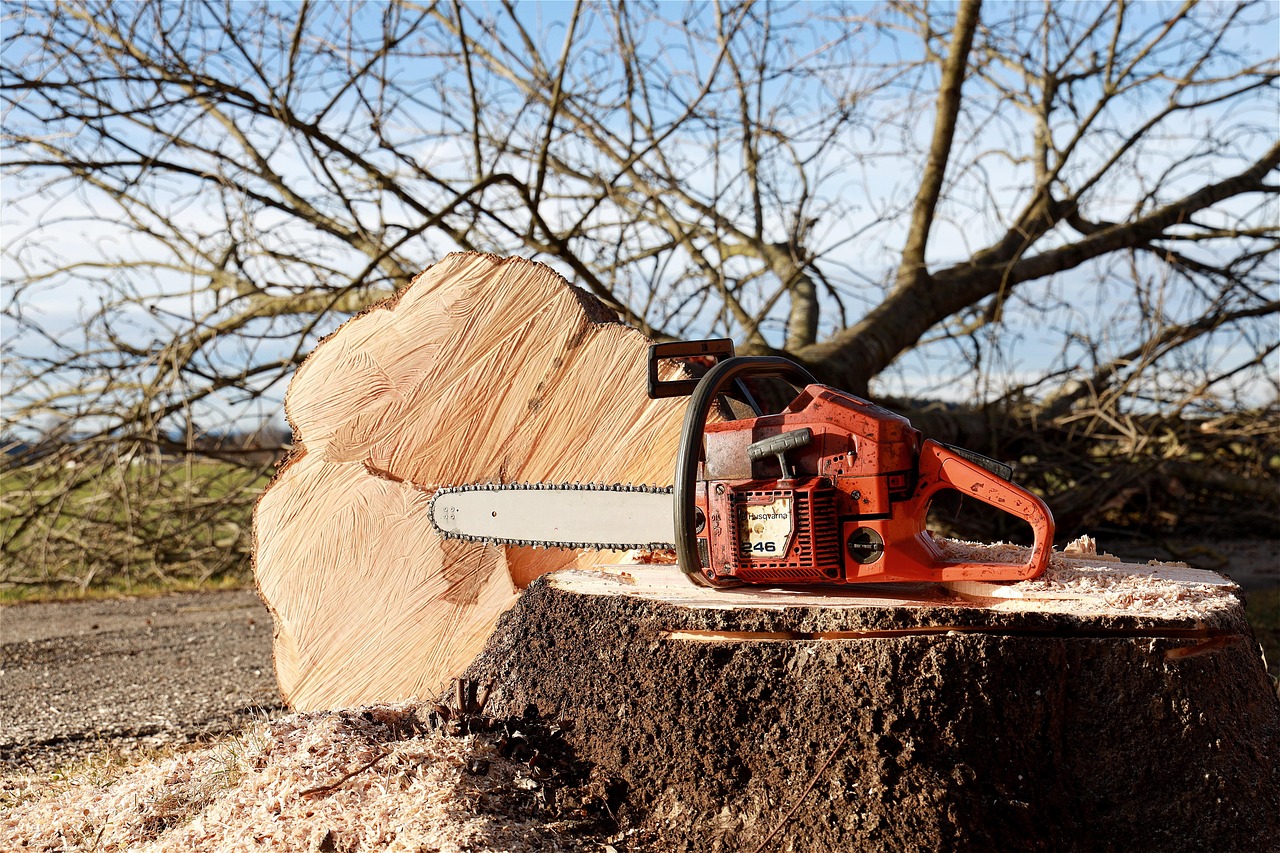Proper pruning of young trees accelerates growth, improves structure, and enhances resilience. Using correct techniques during the right season ensures healthy development, disease prevention, and better sunlight exposure. This guide provides practical tips on timing, tools, and methods to promote optimal growth and long-term tree vitality.
Young tree pruning plays a vital role in the life cycle of trees. It involves the careful removal of specific branches to shape the tree’s growth and improve its overall health. Young trees are particularly responsive to pruning, making it an excellent time to guide their development. Proper pruning techniques can help establish a strong framework that supports future growth and fruit production.

Understanding the benefits of pruning young trees can help both amateur gardeners and professional arborists make informed decisions. The process not only enhances the aesthetic appeal of trees but also encourages better air circulation and light exposure. These factors contribute significantly to the tree’s health and growth rate.
Benefits of Pruning Young Trees
Pruning young trees offers numerous advantages. Here are some key benefits:
- Improved Structure: Pruning helps create a strong central leader and well-spaced branches. This structure is essential for stability as the tree matures.
- Increased Growth Rate: By removing crowded or competing branches, trees can focus their energy on growing stronger and healthier.
- Enhanced Light Penetration: Proper pruning opens up the canopy, allowing sunlight to reach more leaves, which leads to better photosynthesis.
- Better Air Circulation: Improved airflow through the branches reduces the risk of fungal diseases and promotes a healthier tree.
- Encouragement of Fruit Production: For fruit-bearing trees, pruning can lead to higher yields by promoting better fruit set and quality.
These benefits illustrate why pruning is a critical aspect of young tree care. However, it is also important to consider the right timing and techniques for effective pruning.

Pro-Tips and Common Mistakes to Avoid
- When I first started pruning, I made the mistake of over-pruning, removing too many branches at once. I learned that this stresses the tree and slows its growth. Now, I prune selectively, removing only what’s necessary to promote healthy development.
- Early on, I was guilty of making improper cuts—cutting too close to the trunk or leaving stubs. This often caused wounds that took a long time to heal. I now ensure my cuts are clean, at the correct angle, and just outside the branch collar.
- Initially, I pruned during the wrong season, which caused excessive sap loss and increased disease risk. After researching, I learned that the dormant season (late winter to early spring) is best for most young trees to minimize stress.
- I ignored the specific needs of different tree species and used a one-size-fits-all approach to pruning. Moving forward, I tailored my techniques based on each tree’s unique growth habits and requirements.
- When my tools weren’t sharp, I found that crushing branches rather than making smooth cuts led to infections. Now, I always sharpen my pruning blades regularly to ensure clean cuts and healthier trees.
When to Prune Young Trees
The timing of pruning is crucial for maximizing its benefits. Generally, young trees should be pruned during their dormant season, which varies based on the tree species and climate. The dormant season typically occurs in late winter to early spring before new growth begins. Pruning during this time minimizes stress on the tree and allows for quicker recovery.
However, some species may benefit from light pruning in summer. This technique helps control growth while reducing the risk of disease. It is essential to research specific tree species to determine the best pruning schedule.
Signs That a Tree Needs Pruning
Knowing when to prune is just as important as knowing how to prune. Here are some signs that indicate a young tree may need pruning:

- Crowded branches: If branches are overlapping or rubbing against each other, it may be time to prune.
- Weak or unhealthy growth: Look for branches that appear weak or diseased; these should be removed to promote overall health.
- Unbalanced shape: If a tree is growing unevenly or has multiple leaders, pruning can help correct its shape.
- Pest or disease presence: Any sign of pests or diseases warrants immediate action through pruning to prevent further spread.
Pruning Techniques for Young Trees
Utilizing effective pruning techniques is essential for ensuring that young trees develop properly. Below are some common methods used in young tree pruning:
- Thinning: This technique involves selectively removing branches to increase light penetration and airflow.
- Heading: Heading back involves cutting back branches to a bud or lateral branch to encourage bushier growth.
- Reduction: This method includes shortening branches to reduce their length while maintaining the overall shape of the tree.
- Cleaning: Removing dead, damaged, or diseased branches is crucial for maintaining the tree’s health.
Each technique serves a specific purpose and can be adapted based on the tree’s needs. Understanding these methods allows for more effective management of young tree growth.
Tools Needed for Pruning
Using the right tools makes pruning easier and more effective. Essential tools for pruning young trees include:

- Pruning shears: Ideal for small branches up to ¾ inch in diameter.
- Loppers: Suitable for thicker branches that are too large for pruning shears.
- Saws: A hand saw or pole saw is necessary for larger limbs that require cutting.
- Gloves: Protect your hands while handling tools and branches.
Having the correct tools ensures that you can prune efficiently and safely, leading to better outcomes for young trees.
Common Pruning Mistakes to Avoid
While pruning young trees is beneficial, improper techniques can lead to negative outcomes. Understanding common mistakes can help ensure successful pruning practices. Here are some frequent errors to avoid:
- Over-pruning: Removing too many branches can stress the tree and hinder growth. It is essential to prune selectively.
- Improper cuts: Making cuts too close to the trunk or leaving stubs can damage the tree. Always cut at the appropriate angle and distance.
- Pruning at the wrong time: Timing is crucial. Pruning during active growth can lead to excessive sap loss and weaken the tree.
- Ignoring tree species: Different species have specific pruning needs. Failing to consider these can result in poor growth patterns.
- Using dull tools: Dull tools can crush branches rather than make clean cuts, which can invite disease. Always ensure tools are sharp.
Avoiding these mistakes will promote a healthier and faster-growing tree. It is essential to approach each pruning session with care and knowledge.
The Pruning Process Step-by-Step
To achieve optimal results, follow a systematic pruning process. Here is a step-by-step guide:
- Assess the Tree: Examine the tree’s overall structure. Identify weak branches, overcrowding, and any signs of disease.
- Set Clear Goals: Determine what you want to achieve with the pruning. This could include shaping the tree or enhancing air circulation.
- Start with Dead or Damaged Branches: Remove any dead, diseased, or damaged branches first. This improves the tree’s health and reduces disease risk.
- Thin Out Crowded Areas: Selectively remove branches that are crossing or crowding each other. Aim for a well-spaced canopy.
- Shape the Tree: Focus on creating a balanced shape by trimming back longer branches and maintaining a strong central leader.
- Clean Up: After pruning, collect and dispose of all cuttings to prevent pest and disease buildup around the tree.
This structured approach ensures that pruning is thorough and beneficial while minimizing the risk of stress on the tree.
Understanding Tree Growth Patterns
Before pruning, it is essential to understand how trees grow. Trees grow in two main ways: vertically and laterally. Here are some key points regarding growth patterns:
- Apical Dominance: Trees tend to grow taller when the main central stem is dominant. This is why maintaining a central leader is crucial during pruning.
- Lateral Growth: When apical dominance is reduced through pruning, lateral branches may begin to grow more vigorously, leading to a bushier appearance.
Knowing these patterns helps in making informed decisions about which branches to prune for desired growth outcomes.
Pruning for Specific Tree Types
Different tree species have unique needs when it comes to pruning. Understanding these differences can significantly enhance growth and maturity. Below are some common types of trees and their specific pruning requirements:
| Tree Type | Pruning Recommendations |
|---|---|
| Fruit Trees | Prune in winter while dormant. Focus on shaping and removing diseased branches. |
| Shade Trees | Light pruning in early spring to maintain structure. Remove any dead wood year-round. |
| Ornamental Trees | Prune while flowering has finished. Shape as necessary, avoiding excessive removal of foliage. |
| Evergreens | Light pruning in late winter is best. Avoid heavy cuts as they do not regenerate as quickly as deciduous trees. |
This table outlines essential tips tailored for various tree types. Adapting your pruning strategy based on the species will contribute to healthier trees with optimal growth patterns.
The Role of Mulching After Pruning
After pruning, applying mulch around the base of young trees can greatly support their recovery and growth. Mulching offers several benefits:
- Moisture Retention: Mulch helps retain soil moisture, reducing the need for frequent watering.
- Weed Suppression: A layer of mulch prevents weeds from competing for nutrients and water.
- Soil Temperature Regulation: Mulch insulates the soil, helping maintain a consistent temperature that promotes root growth.
- Nutrient Addition: Organic mulches decompose over time, adding nutrients back into the soil.
By incorporating mulching into your post-pruning care routine, you can enhance the effectiveness of your efforts and encourage rapid growth in young trees.
Signs of a Healthy Young Tree After Pruning
After pruning, it’s essential to monitor the tree’s recovery and growth. Recognizing signs of health can ensure that your pruning efforts were effective. Here are key indicators of a healthy young tree:
- New Growth: Look for the emergence of new leaves and shoots within a few weeks after pruning. This indicates the tree is redirecting its energy into growth.
- Thickening Trunk: A healthy young tree will develop a thicker trunk as it matures, indicating strength and resilience.
- Improved Leaf Color: Vibrant green leaves suggest the tree is photosynthesizing effectively, a sign of good health.
- Strong Branch Structure: Well-spaced branches that grow symmetrically indicate successful shaping during the pruning process.
Monitoring these signs helps ensure that the tree is thriving and benefiting from the pruning techniques implemented.
Common Pests and Diseases After Pruning
Pruning can expose young trees to pests and diseases. It is crucial to be vigilant and understand what to look for. Here are some common issues that may arise:
Pests
- Aphids: Small, green insects that can cluster on new growth. They suck sap from the leaves, leading to yellowing and stunted growth.
- Spider Mites: These tiny pests can cause leaf discoloration and webbing. They thrive in dry conditions, so maintaining moisture can help deter them.
- Scale Insects: These pests appear as small bumps on branches and leaves. They can weaken trees by sucking sap.
Diseases
- Fungal Infections: Open cuts from pruning can invite fungal infections. Look for signs like discoloration or wilting leaves.
- Bacterial Canker: This disease can cause dark lesions on branches. Affected trees may show signs of dieback.
- Powdery Mildew: A white fungus on leaves that can hinder photosynthesis and weaken the tree.
Identifying these pests and diseases early allows for prompt treatment, protecting the young tree’s health and growth potential.
Best Practices for Ongoing Tree Care
After pruning and monitoring for signs of health, ongoing care is essential for young trees. Here are some best practices to ensure continued success:
- Regular Watering: Young trees require consistent moisture. Water deeply but infrequently to encourage deep root growth.
- Nutrient Management: Apply a balanced fertilizer in early spring to support healthy growth. Soil testing can help identify specific nutrient needs.
- Mulching: As previously mentioned, maintain a mulch layer to retain moisture and suppress weeds. Replenish mulch as needed.
- Pest Monitoring: Regularly check for signs of pests or diseases. Early detection is crucial for effective intervention.
- Seasonal Pruning: While young trees need significant initial shaping, light maintenance pruning should continue as necessary to encourage healthy growth.
These practices create a supportive environment, allowing young trees to flourish as they mature.
The Role of Environmental Factors
The growth and health of young trees are influenced by various environmental factors. Understanding these elements can help in providing optimal care:
- Soil Quality: Well-draining, nutrient-rich soil promotes strong root development. Conduct soil tests to determine pH and nutrient levels.
- Sunlight Exposure: Most young trees require full sun for at least six hours a day. Ensure they are planted in locations where they receive adequate sunlight.
- Temperature Variability: Extreme temperature fluctuations can stress young trees. Select species that are well-suited to local climate conditions.
- Wind Protection: Young trees may be vulnerable to strong winds. Providing windbreaks or selecting sheltered planting locations can enhance survival rates.
By considering these environmental factors, you can significantly improve the chances of successful tree establishment and growth.
The Importance of Community Resources
Taking advantage of community resources can provide valuable information and support for young tree care. Local gardening clubs, extension services, and arborists often offer resources such as workshops, informational pamphlets, and direct assistance. Here are some community resources to consider:
- Local Extension Offices: Many universities have agricultural extension offices that provide educational materials on tree care and maintenance.
- Tree Planting Programs: Some communities offer programs that provide free or subsidized trees along with guidance on proper planting and care.
- Workshops and Classes: Participating in local gardening classes can enhance your knowledge about specific tree species and effective pruning techniques.
- Professional Arborists: Hiring a certified arborist for consultations can help tailor tree care practices to specific needs.
Tapping into local resources fosters a community approach to tree care, enhancing knowledge and support for promoting tree health and maturity.
Advanced Pruning Techniques for Enthusiasts
For those who have gained confidence in basic pruning, exploring advanced techniques can further enhance tree growth and structure. Here are some advanced pruning methods that can be beneficial for young trees:
Crown Thinning
Crown thinning involves selectively removing branches to improve light penetration and air circulation within the canopy. This technique is particularly useful for trees that have dense foliage. When performing crown thinning, it’s essential to:
- Focus on removing smaller branches rather than large ones.
- Aim for a balanced canopy to ensure even light distribution.
- Maintain the natural shape of the tree to promote aesthetic appeal.
Crown Raising
Crown raising is the practice of removing lower branches to provide clearance above the ground. This technique is often used for trees planted near walkways or roads. Key points to consider include:
- Remove lower branches gradually to avoid shocking the tree.
- Ensure that the tree maintains a strong leader to support upward growth.
- Consider the overall shape of the tree to keep it visually pleasing.
Espalier and Other Shaping Techniques
Espalier is an artistic pruning technique that involves training trees to grow flat against a wall or trellis. This method can maximize space and create stunning visual effects in gardens. To practice espalier:
- Choose a suitable tree species that responds well to training.
- Use wires or supports to guide branches into desired positions.
- Regularly maintain the shape through pruning and training.
Other shaping techniques, such as pollarding, can also be explored depending on specific aesthetic goals and tree species.
Environmental Sustainability and Tree Care
As we focus on tree care, it is essential to consider environmental sustainability. Healthy trees contribute significantly to our ecosystems by improving air quality, providing shade, and supporting wildlife. Here are ways to ensure your tree care practices are environmentally friendly:
- Use Organic Mulch: Opt for organic mulches, such as wood chips or bark, which decompose and enrich the soil.
- Avoid Chemical Fertilizers: Choose organic fertilizers or compost to enrich the soil without harming beneficial organisms.
- Practice Integrated Pest Management (IPM): Use natural pest control methods, such as introducing beneficial insects or using organic sprays.
- Plant Native Species: Native trees tend to require less maintenance and are more resilient to local pests and diseases.
By aligning tree care with sustainable practices, you not only promote healthier trees but also support your local environment.
Final Thoughts
Younger trees require careful attention and management, particularly through effective pruning techniques. Pruning at the right time, using appropriate tools, and applying knowledge about specific tree species can significantly enhance growth rates and maturity. The benefits of pruning go beyond aesthetics; they support the overall health of the tree, making it more resilient against pests and diseases.
Throughout this article, we have explored various aspects of young tree pruning, including key benefits, timing, techniques, tools, and ongoing care practices. By integrating these strategies with community resources and sustainable practices, you can ensure that your young trees thrive in their environment.
As you continue your journey in tree care, remember that patience and observation are critical. Each tree is unique; therefore, adapting your approach based on its responses will lead to successful outcomes. Embrace the learning process and enjoy watching your young trees grow into strong, mature specimens that will provide beauty and benefits for years to come.
